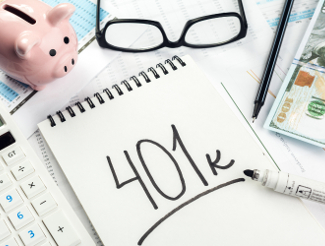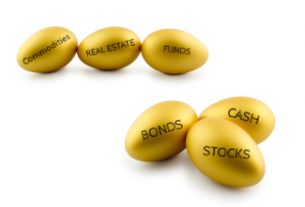The stock market bull run of the past few years has created more than a few 401(k) millionaires. But with economic headwinds increasing, including a trade war that shows no signs of abating, many investors are getting nervous about just how long they’ll remain 401(k) millionaires. Investors who have made their money in stock markets are aware that a stock market crash could wipe out their wealth just as easily as the bull market grew their wealth.
Many investors, particularly those who are retired or close to retirement, remember what happened in 2008. Many lost over half their savings as stock markets plummeted as a result of the financial crisis. Those investors don’t want to see a repeat of 2008, and they want to do anything they can to avoid making the same mistakes. But with so many investment options out there, what’s the best way for investors to protect their 401(k) assets from losing value in the coming years?
Don’t Stop Contributing to Your 401(k)
If you’re still working and contributing to a 401(k) plan, it’s important that you not stop contributing to your plan, with a few caveats. We’ll assume that, like many Americans, you have employer matching contributions. We’ll also assume that your 401(k) plan offers investment options that aren’t limited just to funds that invest only in stocks.
Because of employer matching contributions, you essentially get free money to invest. In many cases that can double the amount of money that you’re investing in your 401(k) plan. By pulling back on your 401(k) contributions you could be putting those employer matches at risk, costing yourself a lot of money that you could be profitably investing.
Most 401(k) plans offer a variety of investment options in stock funds, whether that be large-cap, mid-cap, or small-cap stock investment funds. But many will also offer investments in bond funds, money market funds, etc. If your 401(k) plan offers those, especially money market funds, those can be a useful place not only to store your existing 401(k) assets until you decide what to do with them but also to place your future contributions, at least temporarily.
Let’s say that the Dow Jones falls from 28,000 to 14,000 points by the end of 2020, then recovers to 35,000 points by the end of 2023. And let’s assume that you have an existing $50,000 401(k) balance and contribute $300 each month with a $200 employer match, for a total contribution of $500 per month.
If you kept your contributions and assets in funds that mirrored stock markets you’d end up with a little over $29,000 in your 401(k) at the end of next year, but that would then grow to $100,000 by the end of 2023. If you invested that money into a money market fund that grows at 1% per year, you’d have over $56,000 at the end of next year, or roughly double what you would have by sticking with stocks.
If you then moved back into stocks a year from now to benefit from the rebound, you would end up with over $163,000 at the end of 2023, or 63% more than you otherwise would have. Even if you didn’t pick up on the recovery until a year later, you’d still have over $117,000 by the end of 2023, or a 17% increase versus sticking to stocks.
But if you had stopped your contributions completely, moved your existing 401(k) assets into money market funds, then moved those assets back into stocks and restarted your contributions at the beginning of 2022, you would end 2023 with only $96,000 in your 401(k) plan. That’s 4% less than if you hadn’t changed your contributions at all, and 40% less than if you had engaged in strategic asset management. Resist the urge to pull back on investing.
Reduce Exposure to Stocks
The previous example demonstrates that reducing exposure to stock investments can be key to maintaining and growing wealth during and after a stock market crash. Market timing is notoriously difficult, and in many cases picking both the top and bottom of a stock market has more to do with luck than skill. But as the example above also demonstrates, even delaying a return to stock markets by a year can still end up with you coming out ahead versus just the standard buy and hold investment strategy.
The key to reducing your exposure to stocks is to figure out when the top occurs and to pull your money out relatively close to it. Too many investors start seeing stocks decline and think that they’ll recover. Only when it’s abundantly clear that markets are in a nosedive do they finally accept the reality that their stock investments won’t recover. And then they make the mistake of selling at the bottom, locking in losses and missing out on the gains that occur from a rebound.
The temptation to wring every last penny from a stock market bull run is a great one. No one wants to miss out on gains, after all. But sometimes you have to know when to minimize your risk and your exposure to stocks. Investors who sold their stock investments when the Dow Jones was at 26,000 or 24,000 or even 22,000 last December may be kicking themselves for missing out on the gains they could have made when the Dow went to 28,000 this year. But when the Dow falls below 20,000 next year and continues falling, they’ll pat themselves on the back for making a wise investment decision.
Diversify Your Portfolio
If you’re going to get out of stocks, what will you then invest in? For most investors bonds have been the reflexive natural choice. But bond markets are themselves in a bubble, with bond prices artificially elevated and yields artificially depressed by over a decade of loose monetary policy.
Corporate bonds in particular are in a major bubble, with huge amounts of debt being issued, and each successive issuance being of lower and lower quality. Investors who invest in corporate bonds, especially those that are currently BBB-rated, risk losing big.
Government bond issuance has exploded too, with trillions of dollars of new government debt flooding bond markets in recent years. But while everyone knows that over the long term government debt will eventually be defaulted on, in the short term the right government bond funds can play a beneficial role in maintaining assets and protecting against downside risk.
TSP investors have the G Fund, which expressly states that it cannot lose value. Investors in 401(k) plans may have similar investment options, particularly bond funds that invest in short-term debt and that focus on deriving value from bond yields rather than trading bonds based on their asset value.
Investors should also keep an open mind to investing in gold, which is perhaps the best asset out there for protecting investor wealth. Not only does gold maintain its value in the face of stock market crashes, it even gains value as stock markets plummet.
Millions of investors rode out the 2008 crisis watching their 401(k) balances plummet, all the while watching gold rise in value. And while stock markets showed only lackluster growth in the first few years after the crisis, gold continued to gain. Many of those investors vowed that the next time around they would invest in gold to protect their assets, and so they have.
With a gold IRA, investors can even transfer their existing 401(k) or other retirement account assets into gold tax-free, allowing them to protect their current retirement savings while still benefiting from the tax protection enjoyed by a conventional IRA. That allows them to protect their assets without having to worry about taking a huge loss from stock markets or a huge tax hit.
If you’re worried about the coming recession and want to protect your 401(k) assets, now is the time to start thinking about that protection. Waiting too long puts you at risk of losing significant amounts of money when the recession finally hits. Don’t leave your retirement savings at risk – make the first moves to start protecting your assets today, before it’s too late.
This article was originally posted on Goldco.




